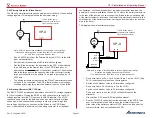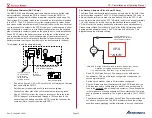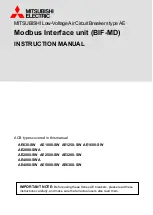
Page 17
VP-X Installation and Operating Manual
Rev. D (August 5, 2020)
4.5 Tools and Other Stuff
This is a generic list of items to assist with planning. Some items may vary
depending on the requirements of your specific installation.
Things you will need
• Crimper - insulated terminals 10 to 22 AWG
• Crimper - d-sub machined barrel male
• Crimper – terminals for 2 to 8 AWG wire
• Stripper(s) – for wire 14 to 26 AWG
• Starter contactor (Optional, PPS Preferred)
• Battery contactor (Optional, PPS Preferred)
• Heavy gauge wire for “main” power runs
• Heavy gauge wire terminals (non-insulated)
• Alternator(s) and voltage regulator(s)
• Wires for data interconnects on avionics
• EFIS – for VP-X status and setup
•
Ray Allen Co. POS-12 flap position sensor (optional)
•
Momentary up and down (on)-off-(on) flap switch. All sticks can be
ordered or retrofit with this switch type.
• Magneto/starter switch
• Switches
Be sure to use a momentary up and momentary down flap
switch (on)-off-(on). Most flap switches come standard in a
non-momentary up configuration on-off-(on).
Things you won’t need
• Battery contactor and starter contactor if using PPS (preferred)
• Flap Positioning System
• Flap Controller
• Flap over-speed module
• Trim Controller
• Trim speed controller
• Wig-wag module
•
Trim or flap position indicators
• Trim relays
• Trim voltage regulator
• Avionics relay
• E-bus diode
• Circuit breakers/fuses (except for backup circuits)
• Shunts/hall effect sensor
• Over-voltage module
• Low-voltage alarm
4.6 VP-X Connectors
The photos below show the different connectors used in the VP-X, the big,
higher-amperage power connector on the left and the smaller, low-amperage
d-sub connector on the right.
Power Connector
D-sub Connector
There are six connectors on VP-X Pro and five on the VP-X Sport. Three of
these connectors, identified as J8, J10, J12 (corresponding with the number
of pins on the respective connector), carry high-current loads. J8 is not
installed on the VP-X Sport.
The two d-sub connectors, J1 & J2, are used for low-current purposes such
as trim motor operation, position feedback, serial data, and switch inputs.
J1 is the top connector. It is male. The connector on the wiring harness is
female. J2 is the bottom connector. It is female. The connector on the wiring
harness is male.
The top Ethernet connector is used to communicate with a Windows PC for
configuration and software updates. The bottom one is not used.
















































